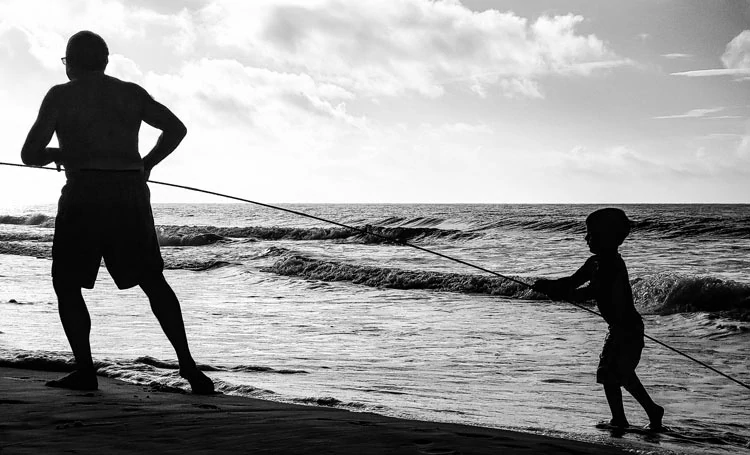Outdoor Photography Guide: 15 Tips for Professionals

Amidst the hustle and bustle of our modern lives, there exists a realm of tranquility and beauty that only nature can provide. Outdoor photography serves as our bridge to this untouched world, allowing us to freeze moments of raw majesty and fragile wonder.
In the dance of sunlight through leaves, the reflection of mountains upon still waters, and the quiet intimacy of a wildlife encounter, outdoor photography captures the essence of life itself.
Beneath the open sky, every photograph becomes a testament to the silent symphony of the natural world. The benefits are far-reaching, as each click of the shutter opens a window into the profound connection we share with our environment.
Let us delve into our outdoor photography guide to uncover the profound revelations that await beneath the open sky.
Essential Gear for Outdoor Photography
As we traverse the realms of essential gear, remember that each piece is more than equipment—it’s a vessel for your vision.
Cameras and Lenses

In the realm of outdoor photography, your camera becomes an extension of your senses, a conduit to capture the very essence of nature’s beauty. The decision between DSLRs and mirrorless cameras marks the crossroads of traditional prowess and cutting-edge innovation. While DSLRs boast their optical viewfinders and rugged build, mirrorless cameras offer compactness and lightning-fast autofocus.
The heart of your gear lies in your choice of lenses, as they craft the story within each frame. Wide-angle lenses weave landscapes with endless horizons, while telephoto lenses invite distant worlds into your viewfinder. For those drawn to nature’s minutiae, a macro lens unveils realms unseen by the naked eye. Each lens is a brushstroke on the canvas of your vision.
Tripods and Stabilization

In the dance between light and time, stability is your ally. Enter the tripod—an unwavering companion in capturing long exposures of cascading waterfalls or the velvety hues of twilight. Sturdy and adaptable, a tripod unlocks your ability to paint with light, transforming motion into poetry.
Filters for Enhancing Outdoor Shots

As the world’s tapestry unfurls before your lens, filters step in as masterful tools of refinement. Polarizers wield the power to tame unruly reflections, bestowing clarity upon lakes and windows into riverbeds. ND filters, with their unassuming neutrality, introduce control over exposure- shaping motion into ethereal trails or caressing clouds into silk.
Outdoor Landscape Photography

The canvas of the natural world offers a multitude of opportunities to capture breathtaking landscapes, where every sunrise and sunset writes its own unique story. Here’s a short but effective outdoor photography guide that will help you master the art of landscape photography:
1. Golden Hour Advantage

The first and last hours of sunlight during the day, commonly known as the golden hour, gift photographers with a magical quality of light. The sun’s warm and soft rays cast long shadows and create a gentle contrast, bathing your scenes in a captivating glow. This is the time to capture landscapes at their most enchanting, from serene seascapes to towering mountains.
2. Foreground Interest

A striking landscape doesn’t just stretch into the distance—it begins right at your feet. Incorporating interesting foreground elements, such as rocks, flowers, or even a winding path, adds depth and context to your composition. These elements act as stepping stones, leading the viewer’s gaze from the front to the heart of your photograph.
3. Rule of Thirds

When composing landscapes, remember the age-old rule of thirds. Imagine your frame divided into a 3×3 grid, and position your key elements along the gridlines or at their intersections. Placing the horizon on the lower or upper third of the frame, depending on the sky or foreground’s significance, creates a balanced composition that feels harmonious to the eye.
Outdoor Wildlife Photography

Venturing into the world of wildlife photography offers a unique opportunity to connect with the animal kingdom and portray its essence through your lens. Here are some outdoor photoshoot ideas that will help you excel in capturing captivating wildlife moments:
4. Telephoto Advantage

Telephoto lenses become your closest allies in wildlife photography. These lenses allow you to zoom in on distant subjects without intruding into their space. This way, you can capture intricate details of animals’ behavior, feathers, fur, or even expressions, while maintaining a respectful distance.
5. Patience and Timing

Wildlife is an unscripted spectacle, and capturing its genuine moments requires patience and impeccable timing. Observe your subjects closely, learn their habits, and be prepared to wait for the ideal moment—a predator’s pounce, a bird’s flight, or a mammal’s interaction. These moments tell the stories that resonate with viewers.
6. Ethical Considerations

Respect for wildlife and their habitats is not only an ethical imperative but also a cornerstone of compelling wildlife photography. Use long lenses to avoid getting too close, and remember that your presence should not alter their natural behavior. Minimize any impact on their environment, ensuring you’re a silent observer rather than an intrusive participant.
Macro Photography

In the world of macro photography, even the tiniest subjects become monumental, unveiling intricate details invisible to the naked eye. To capture the essence of the miniature world, here are some outdoor photoshoot ideas that will elevate your macro photography game:
7. Lighting Control
The play of light can transform the mundane into the magical in macro photography. Utilize diffusers to soften harsh light and prevent harsh shadows. Reflectors bounce light into shadowy areas, revealing textures and colors that would otherwise be lost. Mastering lighting control ensures that your subjects are beautifully illuminated without overwhelming them.
8. Shallow Depth of Field

Harness the power of wide apertures to create a shallow depth of field. This technique places your subject in sharp focus while artfully blurring the background, drawing the viewer’s attention to the intricate details that make macro photography enchanting. By isolating your subject against a dreamy, creamy backdrop, you emphasize its uniqueness.
9. Stable Shots

Macro photography demands precision and stability. A tripod is your steadfast ally, offering rock-solid support to eliminate camera shake, especially in low light conditions. To prevent any further disturbance during the exposure, use a remote shutter release or a timer function. This ensures that your images are tack-sharp, showcasing every tiny facet.
Adventure/Travel Photography

As an adventure and travel photographer, you become a visual storyteller, capturing the essence of places, people, and cultures. Here are some outdoor photoshoot ideas to infuse depth and narrative into your travel photography:
10. Timing and Lighting

The world undergoes a mesmerizing transformation as the sun rises, reaches its zenith, and softly sets. Be attuned to the shifting light and its impact on landscapes and cityscapes. Sunrise and sunset offer magical, warm hues, while midday light casts sharp shadows. These varied lighting conditions provide the backdrop for diverse moods in your travel photographs.
11. Storytelling Details

Travel photography is about more than just picturesque landscapes; it’s about revealing the heart of a place. Capture the intricate textures of a market stall, the vibrant colors of street art, or the delicate folds of traditional clothing. By delving into these details, you weave a rich tapestry that conveys the spirit of a culture and the nuances of a locale.
You may also read– Best Travel Photography Destinations.
12. Candid Moments

The beauty of travel lies in its unscripted moments. Candid photography lets you capture authentic interactions and fleeting expressions that reveal human connection and emotion. These candid shots, from a street musician’s impassioned performance to a child’s gleeful laughter, breathe life into your storytelling, giving viewers a glimpse into genuine experiences.
Portrait Photography

In the realm of portrait photography, your lens becomes a window into the soul, capturing the essence of individuals and telling their stories through expressions, emotions, and settings. Here are some outdoor photoshoot ideas to master the art of capturing compelling portraits:
13. Capture Emotion

At the heart of every portrait lies emotion—the spark that breathes life into an image. Whether it’s a wistful smile, a furrowed brow, or a twinkle in the eye, focus on capturing these genuine emotions that convey a subject’s personality and depth. Candid moments often reveal the most authentic expressions, allowing viewers to connect with the human experience.
14. Location and Context
The environment in which a portrait is captured can be as meaningful as the subject itself. Select locations that resonate with the person’s personality, interests, or story. An artist in their studio, an athlete on the field, or a book lover in a library—each setting adds layers of context, allowing viewers to peer into the subject’s world.
You may also read– Creative Indoor Photography Locations.
15. Edit Photos

After capturing your portraits, the editing process becomes a creative journey of enhancing the mood and narrative. Use post-processing tools to refine colors, contrast, and sharpness while preserving the authenticity of the moment. Enhance emotional cues subtly, directing the viewer’s gaze toward the heart of the image.
Final Thoughts
Remember, outdoor photography is more than technical mastery. It’s an invitation to see the world with fresh eyes and to connect with the extraordinary within the ordinary. Also, it’s about chasing the perfect light, waiting for the decisive moment.
Hopefully, our guide will help you take extraordinary photos in outdoor locations. So, take the opportunity and shoot according to your choices whether the photography genre is wildlife, macro, travel, portrait, and more.







